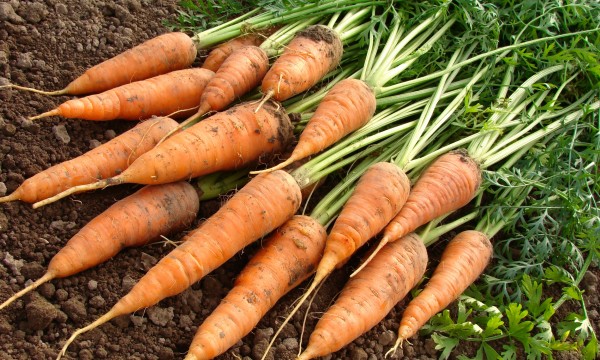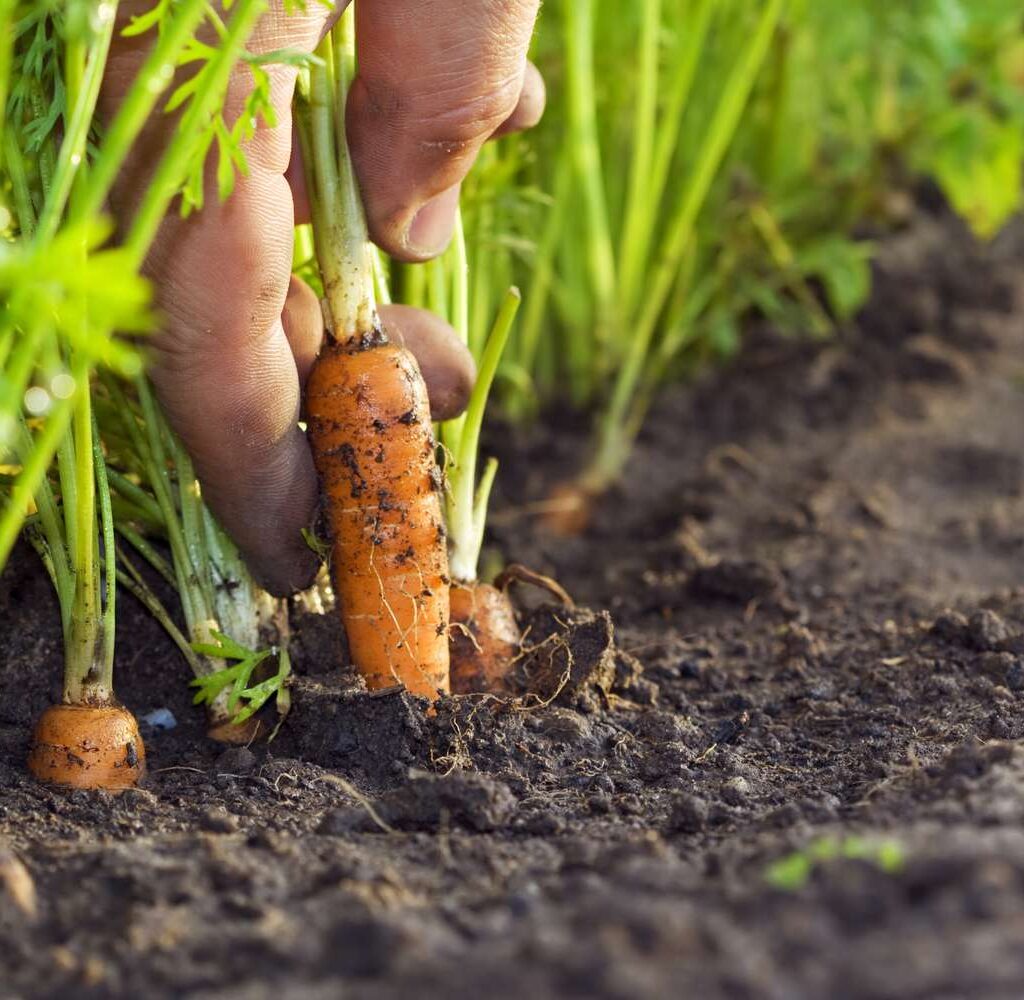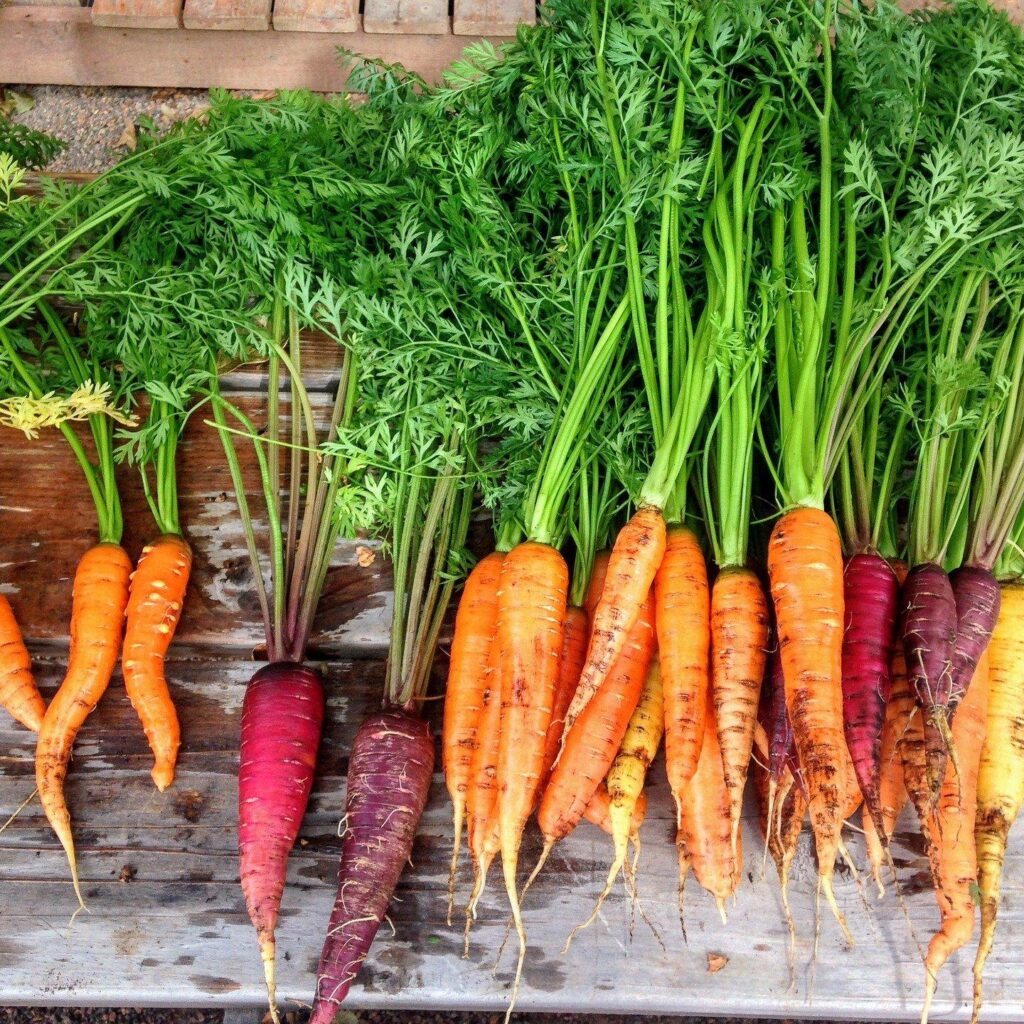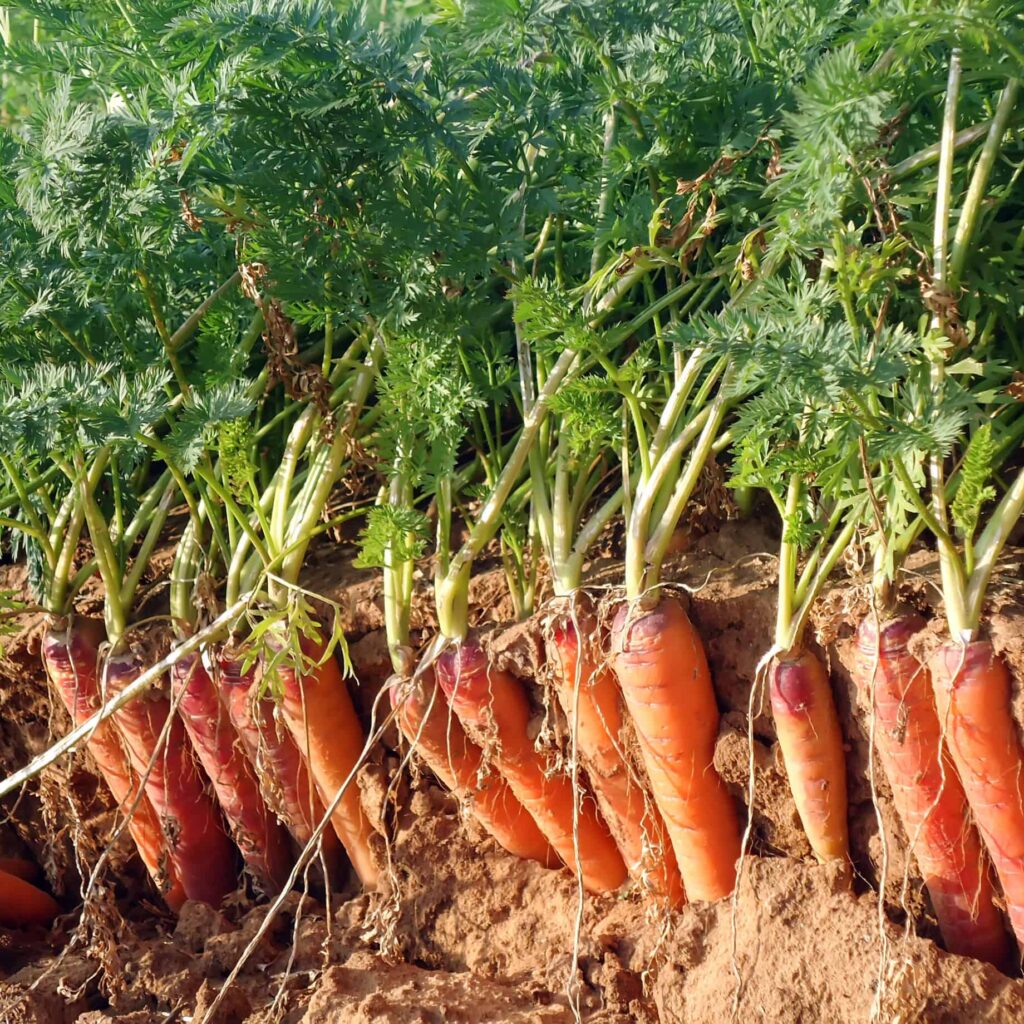Carrots are one of the most loved and versatile root vegetables in the world. Whether you enjoy them raw as a crunchy snack, roasted for dinner, or juiced for a refreshing drink, carrots are a staple in many households. What makes them even more rewarding is that you don’t need a massive garden to grow them. With the right care, carrots can be cultivated in your backyard, balcony containers, or raised garden beds.
In this comprehensive guide, we’ll walk you through everything you need to know about planting carrots to ensure a sweet, crunchy, and plentiful harvest. From soil preparation to seed sowing, watering, and harvesting, this step-by-step guide will make growing carrots enjoyable and productive.
Why Grow Carrots at Home?

Before diving into the “how-to,” let’s understand why carrots are worth growing:
- Health Benefits: Carrots are packed with beta-carotene (which the body converts to vitamin A), essential for eye health, skin, and immunity. They also provide fiber, antioxidants, and vitamins C, K, and B6.
- Versatility: Carrots can be eaten raw, steamed, roasted, stir-fried, or juiced. Their versatility makes them a must-have in the kitchen.
- Cost-Effective: Buying carrots is inexpensive, but growing them ensures you get the freshest produce without chemical residues.
- Satisfaction: There’s immense joy in pulling up your home-grown, perfectly shaped carrots from the soil.
Step 1: Choosing the Right Variety

Carrots come in different shapes, sizes, and even colors. Choosing the right variety ensures success based on your growing space and culinary preferences.
- Nantes Carrots: Cylindrical, sweet, and tender—ideal for fresh eating.
- Danvers Carrots: Classic long, conical carrots with a slightly stronger flavor—great for juicing and cooking.
- Chantenay Carrots: Short and broad, perfect for heavy or clay soils where longer carrots struggle.
- Mini or Baby Carrots: Compact varieties suitable for container growing.
- Colored Carrots: Varieties in purple, red, yellow, or white—great for adding color and antioxidants to meals.
Step 2: Preparing the Soil

Carrots thrive in light, loose, and well-draining soil. Since they are root vegetables, the soil structure directly affects how straight, long, and tender the carrots grow.
- Soil Type: Sandy loam or loose soil is best. Avoid heavy clay or rocky soils that may deform roots.
- pH Level: Carrots prefer slightly acidic to neutral soil (pH 6.0–7.0).
- Enrichment: Add organic matter like compost but avoid fresh manure, which can cause forked roots.
- Depth: Ensure the soil is tilled to at least 10–12 inches deep to allow roots to grow without obstruction.
Pro Tip: Sift the soil before planting to remove rocks, sticks, or clumps that could hinder root development.
Step 3: Planting Carrot Seeds
Unlike many vegetables, carrots don’t transplant well because their delicate roots get disturbed easily. So, it’s best to sow them directly into the soil.
When to Plant
- Carrots prefer cool weather.
- Sow seeds 2–3 weeks before the last spring frost for a spring harvest.
- For fall crops, sow seeds in late summer (8–10 weeks before the first expected frost).
How to Sow Seeds
- Depth: Plant seeds about ¼ inch deep.
- Spacing: Sow seeds thinly in rows, spacing rows 12–18 inches apart.
- Thinning: Once seedlings reach 2 inches tall, thin them to 2 inches apart to avoid overcrowding.
- Moisture: Keep the soil consistently moist during germination, which can take 1–3 weeks.
Pro Tip: Mix carrot seeds with sand before sowing. This ensures better spacing and avoids clumping.
Step 4: Watering and Care
Carrots require steady care, especially during early growth.
- Watering: Keep soil consistently moist but not waterlogged. Deep watering once or twice a week is better than frequent shallow watering.
- Mulching: Apply a thin layer of organic mulch (like straw) to retain moisture and prevent weeds.
- Weeding: Hand-weed carefully to avoid damaging shallow roots.
Pro Tip: Uneven watering can lead to cracked carrots. Maintain consistent moisture levels.
Step 5: Fertilization

Carrots are light feeders but benefit from proper nutrition.
- Before Planting: Work in well-aged compost.
- During Growth: Use a balanced fertilizer low in nitrogen but high in potassium and phosphorus (too much nitrogen encourages leafy tops but small roots).
- Side Dressing: Lightly fertilize 4–6 weeks after germination to encourage root development.
Step 6: Pest and Disease Management

Like all crops, carrots face some threats:
- Pests:
- Carrot Rust Fly: Larvae tunnel into roots, making them inedible. Use row covers to prevent flies from laying eggs.
- Aphids: Suck sap from leaves. Control with neem oil or insecticidal soap.
- Diseases:
- Powdery Mildew: White patches on leaves—prevent by ensuring good air circulation.
- Root Rot: Caused by waterlogged soil—avoid overwatering.
Companion planting with onions, leeks, or rosemary helps repel carrot pests naturally.
Step 7: Harvesting Carrots
The most rewarding step is harvest time!
- When to Harvest:
- Carrots are usually ready 60–80 days after sowing, depending on variety.
- The shoulders (tops of the roots) peeking above the soil should be ½–1 inch in diameter.
- How to Harvest:
- Loosen the soil around the carrots with a fork or trowel.
- Gently pull the tops to lift the roots without breaking them.
Pro Tip: Baby carrots can be harvested early for tender, sweet roots.
Step 8: Storing Carrots
Carrots store well and can provide fresh produce for weeks.
- Short-Term: Keep in the refrigerator for up to 3–4 weeks.
- Long-Term: Store in damp sand or sawdust in a cool, dark place like a root cellar.
- Freezing: Blanch sliced carrots before freezing for long-term use.
Common Mistakes to Avoid
- Overcrowding Seeds: Leads to stunted and misshaped carrots. Always thin seedlings.
- Using Fresh Manure: Causes forked or hairy roots. Use only composted organic matter.
- Uneven Watering: Cracked carrots often result from dry spells followed by heavy watering.
- Shallow Soil Preparation: Roots will twist or split if they hit rocks or compact soil.
Final Thoughts
Planting carrots at home is both simple and rewarding. With the right soil preparation, consistent watering, and a bit of patience, you can enjoy sweet, crunchy carrots straight from your garden. Whether you grow them in a backyard plot, a raised bed, or even a deep container, carrots will reward you with nutritious and delicious harvests throughout the season.
So, grab a packet of seeds, loosen up that soil, and start planting today. The joy of pulling up your very first homegrown carrot is an experience you’ll never forget!




